Jianming Yong
Exploring Incremental Unlearning: Techniques, Challenges, and Future Directions
Feb 23, 2025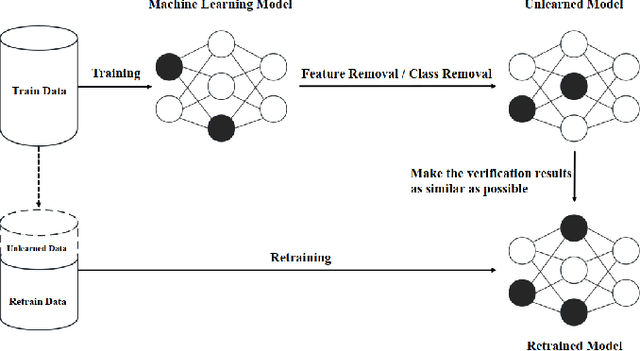
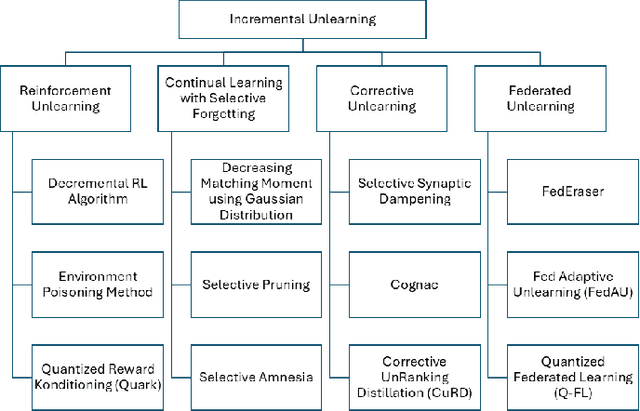
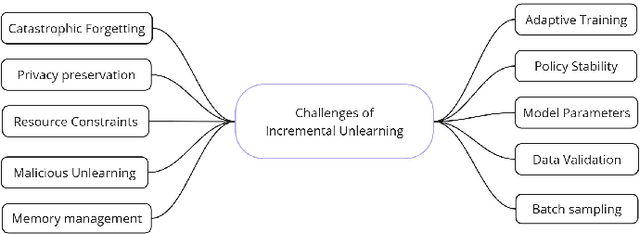
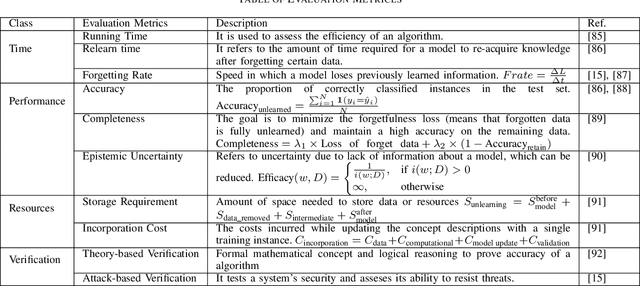
Abstract:The growing demand for data privacy in Machine Learning (ML) applications has seen Machine Unlearning (MU) emerge as a critical area of research. As the `right to be forgotten' becomes regulated globally, it is increasingly important to develop mechanisms that delete user data from AI systems while maintaining performance and scalability of these systems. Incremental Unlearning (IU) is a promising MU solution to address the challenges of efficiently removing specific data from ML models without the need for expensive and time-consuming full retraining. This paper presents the various techniques and approaches to IU. It explores the challenges faced in designing and implementing IU mechanisms. Datasets and metrics for evaluating the performance of unlearning techniques are discussed as well. Finally, potential solutions to the IU challenges alongside future research directions are offered. This survey provides valuable insights for researchers and practitioners seeking to understand the current landscape of IU and its potential for enhancing privacy-preserving intelligent systems.
Towards Causal Classification: A Comprehensive Study on Graph Neural Networks
Jan 27, 2024Abstract:The exploration of Graph Neural Networks (GNNs) for processing graph-structured data has expanded, particularly their potential for causal analysis due to their universal approximation capabilities. Anticipated to significantly enhance common graph-based tasks such as classification and prediction, the development of a causally enhanced GNN framework is yet to be thoroughly investigated. Addressing this shortfall, our study delves into nine benchmark graph classification models, testing their strength and versatility across seven datasets spanning three varied domains to discern the impact of causality on the predictive prowess of GNNs. This research offers a detailed assessment of these models, shedding light on their efficiency, and flexibility in different data environments, and highlighting areas needing advancement. Our findings are instrumental in furthering the understanding and practical application of GNNs in diverse datacentric fields
Exploring Causal Learning through Graph Neural Networks: An In-depth Review
Nov 25, 2023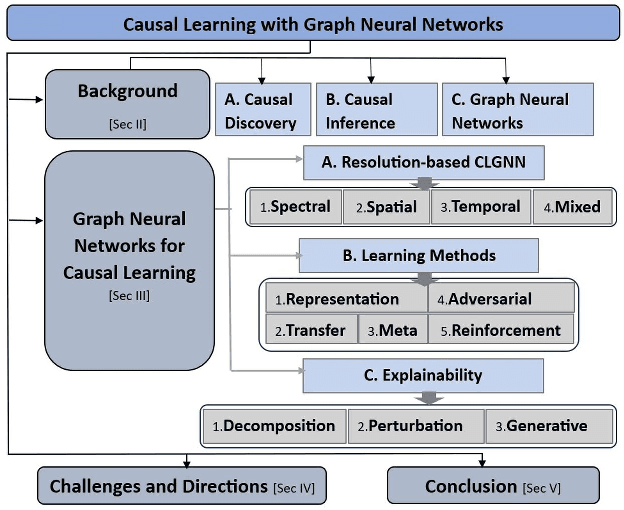
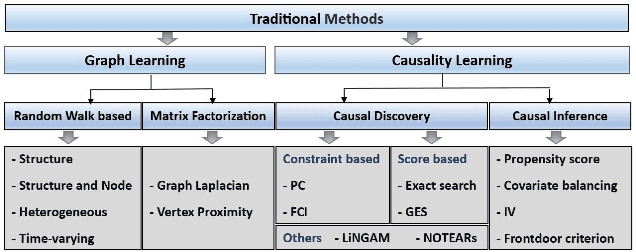
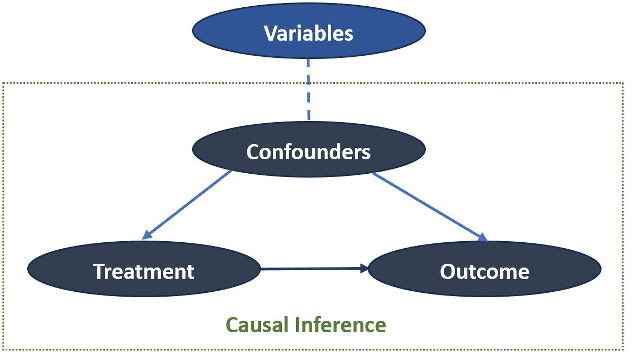
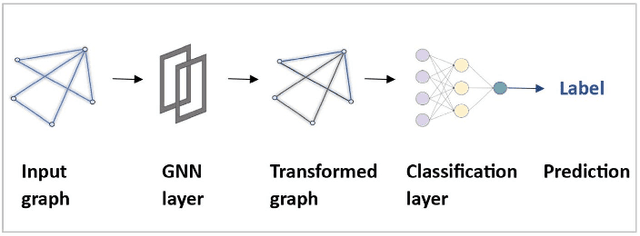
Abstract:In machine learning, exploring data correlations to predict outcomes is a fundamental task. Recognizing causal relationships embedded within data is pivotal for a comprehensive understanding of system dynamics, the significance of which is paramount in data-driven decision-making processes. Beyond traditional methods, there has been a surge in the use of graph neural networks (GNNs) for causal learning, given their capabilities as universal data approximators. Thus, a thorough review of the advancements in causal learning using GNNs is both relevant and timely. To structure this review, we introduce a novel taxonomy that encompasses various state-of-the-art GNN methods employed in studying causality. GNNs are further categorized based on their applications in the causality domain. We further provide an exhaustive compilation of datasets integral to causal learning with GNNs to serve as a resource for practical study. This review also touches upon the application of causal learning across diverse sectors. We conclude the review with insights into potential challenges and promising avenues for future exploration in this rapidly evolving field of machine learning.
AI-Driven Patient Monitoring with Multi-Agent Deep Reinforcement Learning
Sep 24, 2023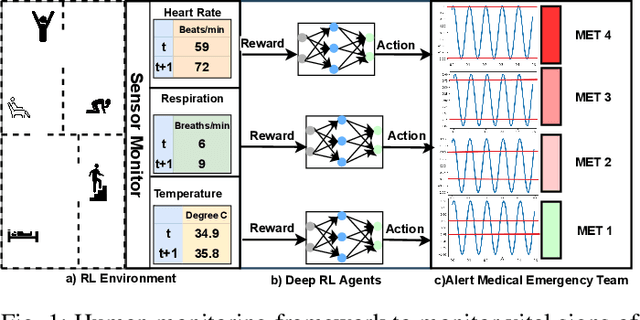

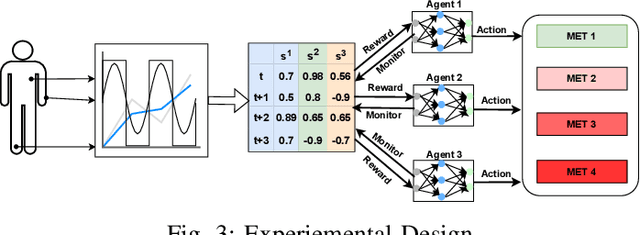

Abstract:Effective patient monitoring is vital for timely interventions and improved healthcare outcomes. Traditional monitoring systems often struggle to handle complex, dynamic environments with fluctuating vital signs, leading to delays in identifying critical conditions. To address this challenge, we propose a novel AI-driven patient monitoring framework using multi-agent deep reinforcement learning (DRL). Our approach deploys multiple learning agents, each dedicated to monitoring a specific physiological feature, such as heart rate, respiration, and temperature. These agents interact with a generic healthcare monitoring environment, learn the patients' behavior patterns, and make informed decisions to alert the corresponding Medical Emergency Teams (METs) based on the level of emergency estimated. In this study, we evaluate the performance of the proposed multi-agent DRL framework using real-world physiological and motion data from two datasets: PPG-DaLiA and WESAD. We compare the results with several baseline models, including Q-Learning, PPO, Actor-Critic, Double DQN, and DDPG, as well as monitoring frameworks like WISEML and CA-MAQL. Our experiments demonstrate that the proposed DRL approach outperforms all other baseline models, achieving more accurate monitoring of patient's vital signs. Furthermore, we conduct hyperparameter optimization to fine-tune the learning process of each agent. By optimizing hyperparameters, we enhance the learning rate and discount factor, thereby improving the agents' overall performance in monitoring patient health status. Our AI-driven patient monitoring system offers several advantages over traditional methods, including the ability to handle complex and uncertain environments, adapt to varying patient conditions, and make real-time decisions without external supervision.
Clustered FedStack: Intermediate Global Models with Bayesian Information Criterion
Sep 20, 2023Abstract:Federated Learning (FL) is currently one of the most popular technologies in the field of Artificial Intelligence (AI) due to its collaborative learning and ability to preserve client privacy. However, it faces challenges such as non-identically and non-independently distributed (non-IID) and data with imbalanced labels among local clients. To address these limitations, the research community has explored various approaches such as using local model parameters, federated generative adversarial learning, and federated representation learning. In our study, we propose a novel Clustered FedStack framework based on the previously published Stacked Federated Learning (FedStack) framework. The local clients send their model predictions and output layer weights to a server, which then builds a robust global model. This global model clusters the local clients based on their output layer weights using a clustering mechanism. We adopt three clustering mechanisms, namely K-Means, Agglomerative, and Gaussian Mixture Models, into the framework and evaluate their performance. We use Bayesian Information Criterion (BIC) with the maximum likelihood function to determine the number of clusters. The Clustered FedStack models outperform baseline models with clustering mechanisms. To estimate the convergence of our proposed framework, we use Cyclical learning rates.
Graph-enabled Reinforcement Learning for Time Series Forecasting with Adaptive Intelligence
Sep 18, 2023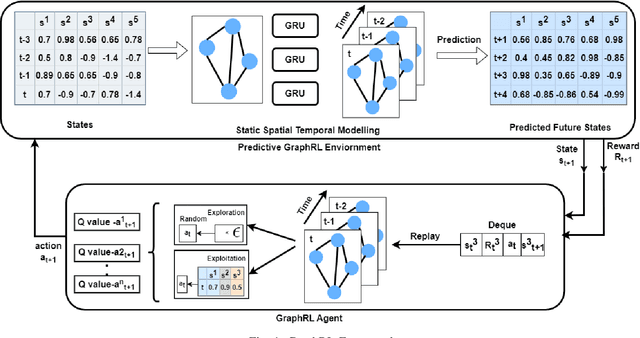
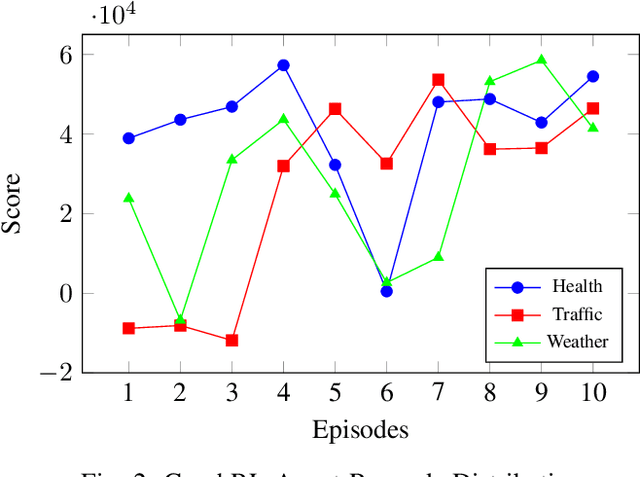
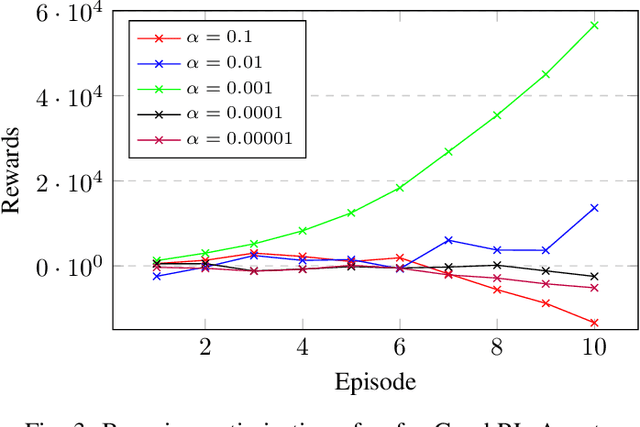
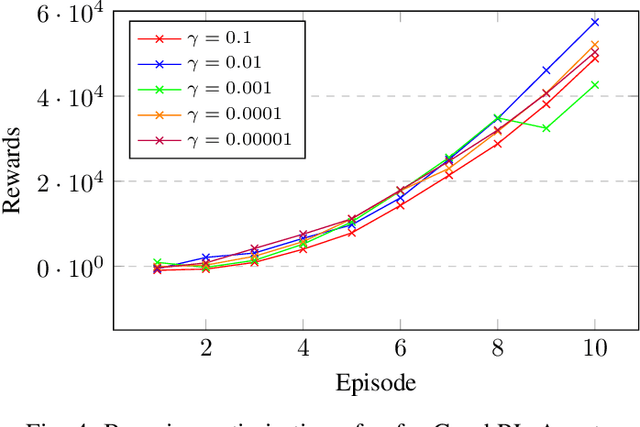
Abstract:Reinforcement learning is well known for its ability to model sequential tasks and learn latent data patterns adaptively. Deep learning models have been widely explored and adopted in regression and classification tasks. However, deep learning has its limitations such as the assumption of equally spaced and ordered data, and the lack of ability to incorporate graph structure in terms of time-series prediction. Graphical neural network (GNN) has the ability to overcome these challenges and capture the temporal dependencies in time-series data. In this study, we propose a novel approach for predicting time-series data using GNN and monitoring with Reinforcement Learning (RL). GNNs are able to explicitly incorporate the graph structure of the data into the model, allowing them to capture temporal dependencies in a more natural way. This approach allows for more accurate predictions in complex temporal structures, such as those found in healthcare, traffic and weather forecasting. We also fine-tune our GraphRL model using a Bayesian optimisation technique to further improve performance. The proposed framework outperforms the baseline models in time-series forecasting and monitoring. The contributions of this study include the introduction of a novel GraphRL framework for time-series prediction and the demonstration of the effectiveness of GNNs in comparison to traditional deep learning models such as RNNs and LSTMs. Overall, this study demonstrates the potential of GraphRL in providing accurate and efficient predictions in dynamic RL environments.
 Add to Chrome
Add to Chrome Add to Firefox
Add to Firefox Add to Edge
Add to Edge